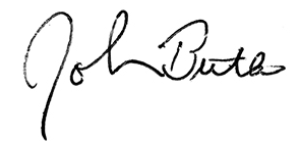- President Putin’s trip to Saudi Arabia and the UAE made headlines
- Iran also joined in Riyadh
- Oil and sanctions were on the agenda. But why was Elvira there?
Last week, in a rare foreign tour, Russia’s President Vladimir Putin travelled to Saudi Arabia and the United Arab Emirates. While it is impossible to know precisely what was discussed in private, hints as to what was on the agenda were provided by those accompanying Putin on his trip.
They included the head of the Chechen Republic, Ramzan Kadyrov; Putin’s top energy official Alexander Novak; Denis Manturov, Russia’s trade minister; and the head of Russia’s central bank, Elvira Nabiullina.
As the leader of Russia’s only Muslim-majority republic, Kadyrov was a natural choice to bring along to help represent Russia’s interests regarding the current Israeli-Palestinian conflict and Arab-Israeli issues more generally.
Mr Novak was included no doubt due to the importance of energy to the regional economy. Likewise Mr Manturov, who has been working with many countries to continue trading in oil and other products amidst US sanctions on Russia associated with the Ukraine war. Representatives of the most important Russian energy companies also took part in the talks, according to state news agencies and the Financial Times:
The UAE has become the main international hub for Russian businesses and a significant route for circumventing western sanctions. According to Putin, the turnover of goods between Russia and the country rose 68 per cent in 2022. “I believe this year [the growth] will be even greater,” he added.
Prince Mohammed and Sheikh Mohammed have developed personal relationships with Putin and touted themselves as interlocutors between Russia and the west. The two have been central to various mediation efforts relating to the Ukraine war, including prisoner swaps.
Saudi Arabia’s economic partnership with Russia has been most strongly felt in the oil market. Prince Mohammed played a crucial role in helping bring Moscow into a broader Opec+ grouping, which last week expanded and deepened output cuts.
Clearly the topics of energy and trade more generally were high on the agenda last week as the key participants confirm.
Less obvious is the inclusion of Ms Nabiullina in the entourage. Why would Russian central bank policies be of serious interest to either the Saudis or Emirates? Why should they care about the Russian money supply, interest rates or strength of the rouble?
If they were ever to begin trading with Russia in roubles, they might care a great deal indeed.
When the US imposes economic sanctions it does so largely by restricting the use of dollars for non-qualifying transactions. International trade in dollars leaves a trail through the international banking system that the US Federal Reserve is able to observe and, if desired, effectively shut down.
While Russia has, with her trading partners, found many ways to evade the current sanctions in place, that doesn’t mean that doing so hasn’t been inconvenient and incurred various frictional costs. Far easier in principle to just avoid use of the US dollar in trade.
In principle yes, but in practice this is difficult because there is simply not a global trade network for oil or other high-volume, high-value products that does not include use of the dollar in some way. It is by far the dominant international trade and invoicing currency.
One can thus imagine that Russia has been working on finding a workable solution to this problem and naturally Ms Nabiullina, as head of the central bank, would be directly involved in developing the necessary infrastructure and, in the case of foreign trading partners, building confidence in it.
More evidence that possible planning for dollar-based sanctions avoidance was provided by the presence of Iranian president Ebrahim Raisi, who flew in from Tehran to join the meetings in Riyadh. Iran has been suffering under US sanctions for decades. They have much experience to bring to the discussion.
That Iran and Saudi Arabia now have diplomatic relations is one of the most important geopolitical shifts in the region in many decades, in large part because Iranian-Russian ties have remained generally strong throughout. These three countries, all huge oil exporters, have a clear common economic interest.
Earlier this year, I wrote of an emerging Russian-Saudi-Iranian “Oil Axis” that could be of global importance:
A historical rapprochement between the Kingdom and Iran would potentially change the global energy landscape. Indeed, one could argue that the formation of a Saudi-Iran-Russia “oil axis” would be the single most important development for the global oil markets since the formation of OPEC in the 1960s.
But this might also have implications that go far beyond just the oil markets. They could have an impact on the entire international monetary and financial system. How? I’ll explain in part two tomorrow.
And if you’d like to learn more about my own personal strategy as to how you could grow your wealth steadily and consistently through this ever-changing geopolitical and financial landscape, just click here.
[Capital at risk.]

John Butler
Investment Director, Fortune & Freedom



